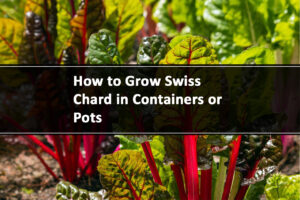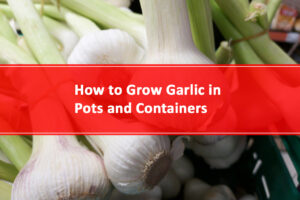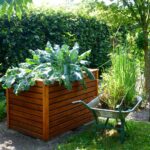Beautiful Plants For Your Interior
Green Oasis in the City: Apartment Balcony Gardening Ideas and Inspiration
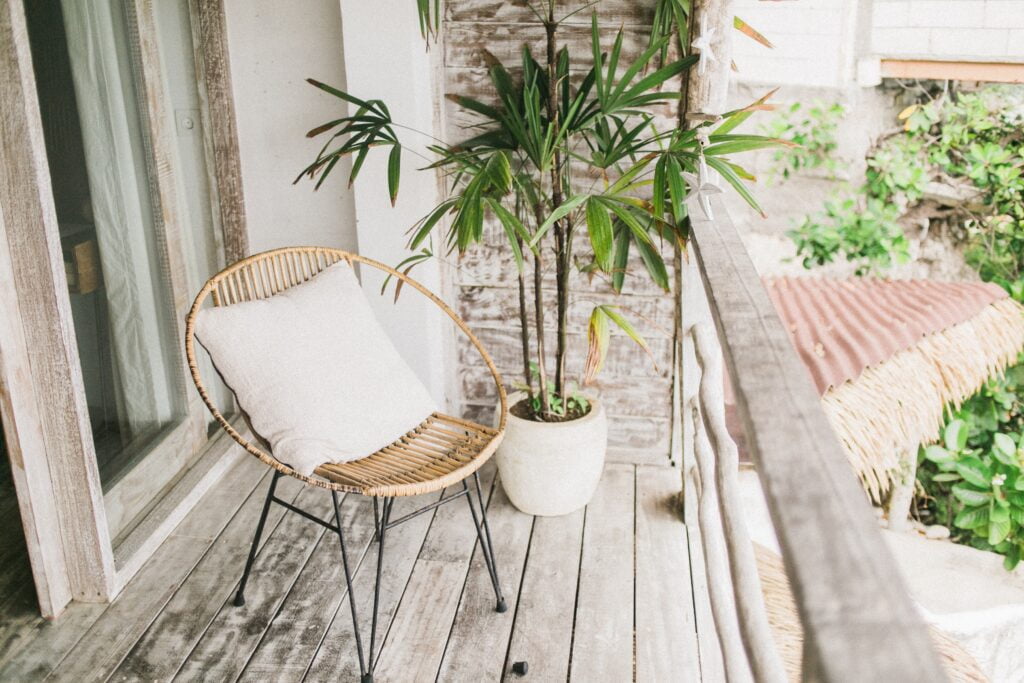
In bustling cities where green spaces are limited, apartment balcony gardening offers a fantastic opportunity to reconnect with nature, create a serene oasis, and indulge in the joys of gardening. Apartment dwellers can transform their balconies into vibrant, lush havens bursting with life and beauty.
We have prepared a comprehensive guide to apartment balcony gardening, providing ideas and inspiration for maximizing limited space while cultivating a green thumb.
What are The Benefits of Apartment Balcony Gardening?

Apartment balcony gardening brings numerous advantages to urban dwellers. Firstly, it allows individuals to embrace nature and experience the calming effects of greenery amidst the concrete jungle. Balcony gardens also enhance the aesthetic appeal of the apartment, making it more inviting and visually pleasing.
Moreover, balcony gardens provide a sanctuary for urban wildlife, attracting birds, butterflies, and beneficial insects. They can also contribute to improved air quality by absorbing pollutants and releasing oxygen. Additionally, balcony gardening allows apartment dwellers to grow their own fresh herbs, vegetables, or fruits, promoting a healthy and sustainable lifestyle.
How to Plan and Design Your Apartment Balcony Garden?
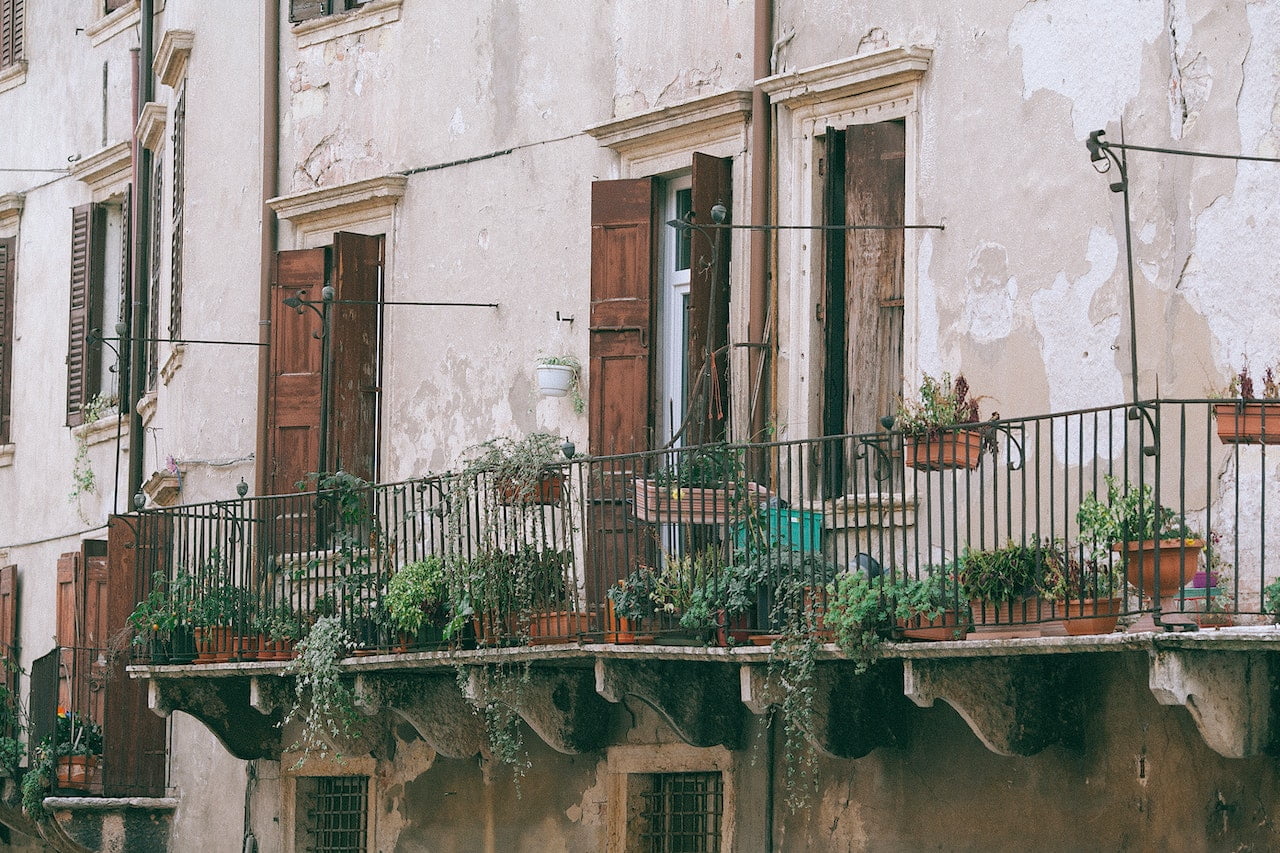
Before embarking on your balcony gardening journey, thoughtful planning and design are crucial. Consider the following factors:
-
Assessing the Space:
Evaluate the size, shape, and orientation of your balcony to determine the available sunlight, wind patterns, and potential obstacles.
-
Container Selection:
Choose containers suitable for your plants’ needs, considering factors such as drainage, material, size, and aesthetics.
-
Plant Selection:
Opt for plants that thrive in containers and suit your climate conditions. Select a mix of ornamental plants, herbs, vegetables, and flowering plants to create a diverse and visually appealing balcony garden.
-
Vertical Gardening:
Utilize vertical space by incorporating trellises, hanging baskets, or wall-mounted planters to maximize your planting area.
-
Watering and Drainage:
Ensure proper drainage by using saucers or self-watering containers. Plan a convenient watering schedule based on your plants’ requirements.
-
Balcony Safety:
Prioritize safety by securing tall plants, avoiding overcrowding, and considering weight restrictions.
Inspiring Apartment Balcony Gardening Ideas
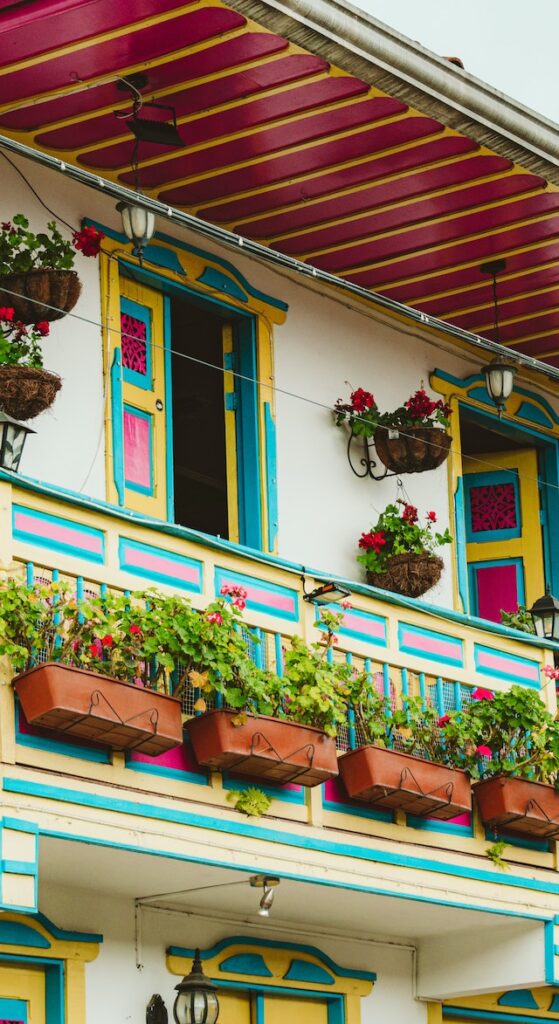
a) Herb and Vegetable Gardens: Grow your own fresh herbs like basil, mint, or rosemary, along with vegetables such as tomatoes, peppers, or lettuce. Utilize vertical gardening techniques, window boxes, or hanging baskets to optimize space.
b) Vertical Green Walls: Install vertical planters or trellises to create stunning green walls filled with cascading plants like ivy, ferns, or trailing flowers. This technique not only saves space but also adds a striking visual element.
c) Flowering Balcony Gardens: Embrace colorful blooms by planting annuals or perennials in pots, window boxes, or hanging baskets. Choose varieties that thrive in containers, such as petunias, geraniums, or marigolds, and create a floral haven.
d) Miniature Fruit Trees: Opt for dwarf or compact fruit trees like citrus, figs, or apples, which can be grown in large containers. Enjoy the delight of harvesting your own fresh fruits on a small scale.
e) Succulent and Cacti Gardens: Cultivate a low-maintenance balcony garden by focusing on drought-tolerant succulents and cacti. Create visually appealing arrangements using various shapes, sizes, and textures.
f) Edible Vertical Gardens: Explore innovative solutions such as vertical hydroponic systems or modular garden panels to grow a variety of edible plants. These systems optimize space utilization and allow year-round cultivation.
g) Hanging Gardens: Suspend hanging baskets or macrame planters from railings or ceiling hooks, adding a whimsical touch to your balcony garden. Choose trailing plants like ivy, ferns, or hanging flowers for a cascading effect.
h) Balcony Herb Garden: Design a dedicated herb garden on your balcony, organizing herbs in pots or vertical planters for easy access during culinary adventures.
What Can You Grow in an Apartment Balcony Garden?

An apartment balcony garden provides a versatile space for growing a wide range of plants, including herbs, vegetables, flowers, and even small fruit trees. Here are some popular options for a balcony garden:
a) Herbs: Basil, mint, parsley, rosemary, thyme, cilantro, chives, oregano, and sage are just a few examples of herbs that thrive in containers. They are compact, aromatic, and perfect for adding fresh flavors to your culinary creations.
b) Leafy Greens: Lettuce, spinach, kale, and Swiss chard can be grown in containers and harvested for salads or stir-fries. Look for compact or baby varieties that require less space.
c) Tomatoes: Dwarf or cherry tomato varieties are well-suited for balcony gardens. They can be grown in pots, hanging baskets, or vertical planters. Provide support with stakes or cages for optimal growth.
d) Peppers: Bell peppers, chili peppers, and sweet peppers can be grown in containers. They appreciate warm temperatures and ample sunlight, making them ideal for a sunny balcony.
e) Strawberries: Compact strawberry plants are perfect for balcony gardens. They can be grown in hanging baskets or containers, allowing you to enjoy sweet, juicy berries right at your fingertips.
f) Flowers: Add a burst of color and beauty to your balcony garden with flowers such as petunias, marigolds, geraniums, pansies, impatiens, or snapdragons. Choose varieties that are suitable for containers and provide continuous blooms.
g) Succulents: Succulents like aloe vera, jade plants, echeveria, or sedum are low-maintenance options for balcony gardens. They require minimal water and are perfect for those with limited time or gardening experience.
h) Climbing Plants: Utilize vertical space by growing climbing plants such as ivy, morning glory, clematis, or jasmine. Provide trellises, stakes, or fences for support and create a beautiful green backdrop.
i) Dwarf Fruit Trees: If space allows, consider dwarf or compact fruit trees such as citrus, figs, or apples. These trees can be grown in large containers and provide a bountiful harvest on a small scale.
j) Microgreens: Microgreens are young, tender greens harvested when they are only a few inches tall. They are nutrient-rich and easy to grow in small trays or containers, making them an excellent choice for a balcony garden.
What Containers or Pots are Best For an Apartment Balcony?
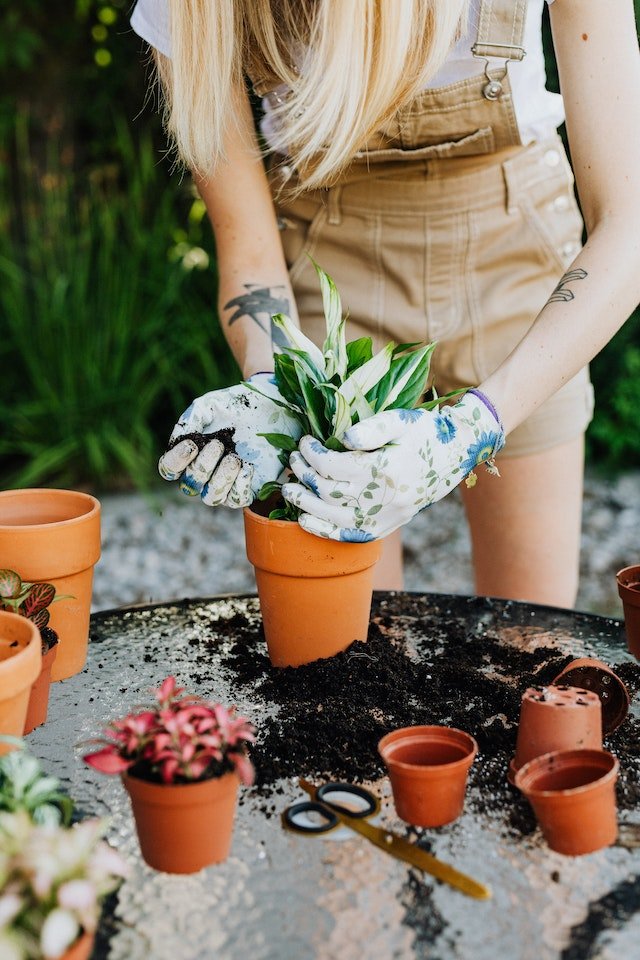
When it comes to choosing containers for your balcony garden, there are several factors to consider, including drainage, material, size, and aesthetics. Here are some container options that work well for balcony gardens:
a) Plastic Pots: Lightweight and affordable, plastic pots are a popular choice for balcony gardens. They come in various sizes, shapes, and colors. Look for pots with drainage holes to ensure proper water drainage.
b) Terra Cotta Pots: These clay pots are porous, allowing for better airflow and root health. However, they can be heavier than plastic pots and may require more frequent watering. Make sure they have drainage holes.
c) Fabric Grow Bags: Also known as smart pots or fabric pots, these containers are made of breathable fabric material. They promote healthy root growth by allowing for better aeration and drainage. Fabric grow bags are lightweight and easy to move around.
d) Hanging Baskets: Perfect for trailing plants and flowers, hanging baskets add a decorative element to your balcony garden. They can be made of plastic, wire, or woven materials. Ensure that they have sufficient drainage and sturdy hooks or chains for support.
e) Window Boxes: Ideal for mounting on railings or window sills, window boxes provide a narrow but elongated space for growing plants. They come in various materials such as plastic, metal, or wood. Choose boxes with drainage holes and secure brackets or hooks for stability.
f) Vertical Planters: These space-saving containers are designed to be mounted on walls or fences, allowing you to grow plants vertically. They come in different styles, including pocket planters, modular panels, or wall-mounted pots. Ensure they have proper irrigation systems and secure attachments to prevent accidents.
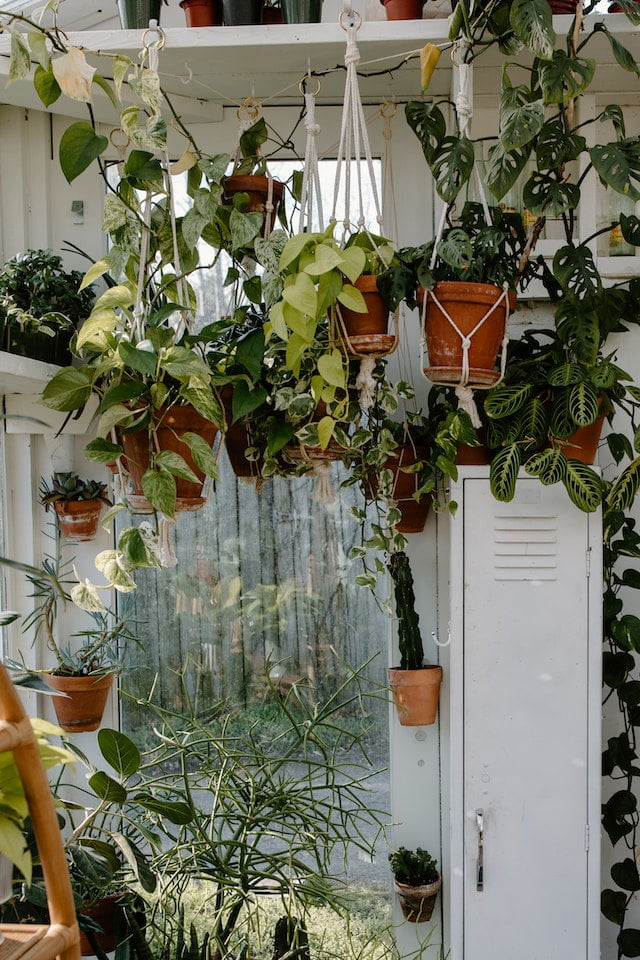
g) Hanging Pouches: These pouches have multiple pockets and can be hung on walls or railings. They are suitable for growing herbs, small flowers, or cascading plants. Look for pouches made from durable and breathable materials.
h) Self-Watering Containers: These containers feature built-in water reservoirs, allowing for efficient watering and reducing the frequency of watering. They are particularly useful for those who may have limited time for regular watering.
i) Recycled Containers: Get creative and repurpose old buckets, crates, or cans as plant containers. Just ensure they have proper drainage and are clean and safe for your plants.
Consider the size and growth patterns of your plants when choosing containers to make sure they have adequate room for their roots to spread out. Also, choose containers that go well with your balcony’s design and aesthetic. To guarantee balcony safety if you are on a higher story, remember to check weight limitations.
People also ask
-
How much sunlight does my balcony need for a successful garden?
The amount of sunlight your balcony receives will depend on its orientation and any surrounding buildings or structures. Generally, most plants require at least 6 hours of direct sunlight per day for optimal growth. However, some plants can tolerate partial shade or filtered sunlight.
-
What are the essential tools and supplies needed for a balcony garden?
Some essential tools and supplies for a balcony garden include gardening gloves, a hand trowel, pruning shears, a watering can or hose, potting soil, fertilizers, and plant containers with proper drainage. Additionally, consider having stakes or trellises for supporting climbing plants and a small storage area for your gardening supplies.
-
How often should I water my apartment balcony garden?
The frequency of watering will depend on various factors such as the type of plants, weather conditions, and container size. As a general rule, check the moisture level of the soil regularly and water when the top inch feels dry. Avoid overwatering, as it can lead to root rot. Adjust your watering schedule based on the specific needs of your plants.
-
Can I grow vegetables and herbs in containers on my balcony?
Yes, many vegetables and herbs can be successfully grown in containers on a balcony. Choose compact or dwarf varieties that are well-suited for container gardening. Ensure they receive adequate sunlight, proper nutrients, and consistent watering.
-
Are there any special considerations for balcony gardening in windy areas?
Balcony gardens in windy areas may require additional precautions. Choose sturdy containers that won’t tip over easily and consider using heavier potting mixes to provide stability. Windbreaks such as trellises, screens, or balcony railings covered with mesh can help protect your plants from strong winds.
-
How can I ensure balcony safety while gardening?
Balcony safety is important when engaging in gardening activities. Avoid overcrowding your balcony with heavy pots or plants that could pose a risk. Be mindful of weight restrictions imposed by your building and consider the load-bearing capacity of your balcony. Secure tall plants and hanging baskets properly to prevent accidents, and avoid using toxic substances or pesticides that could harm you, your neighbors, or your pets.
-
What can I do to attract pollinators to my balcony garden?
To attract pollinators such as bees and butterflies, include a variety of flowering plants in your balcony garden. Choose nectar-rich flowers like lavender, marigolds, zinnias, or cosmos. Providing a water source like a shallow dish with pebbles can also help attract pollinators.
-
Can I start balcony gardening in any season?
Balcony gardening can be started in any season, depending on the climate and the plants you choose to grow. Some plants thrive in cooler seasons, while others prefer warmer weather. Consider your local climate and the specific requirements of the plants you want to grow when deciding the best time to start your balcony garden.
-
Are there any organic gardening methods I can use for my apartment balcony garden?
Absolutely! Organic gardening methods can be applied to balcony gardens as well. Use organic potting soil, compost, and natural fertilizers. Avoid using synthetic pesticides or herbicides and opt for organic alternatives if necessary. Encourage beneficial insects and pollinators by providing habitat and avoiding harmful chemicals.
Wrap up on Apartment Balcony Gardening Ideas and Inspiration
Apartment balcony gardening opens up a world of possibilities for urban dwellers, allowing them to create a lush oasis within the confines of limited space. By following thoughtful planning and design strategies, utilizing vertical gardening techniques, and selecting suitable plants, apartment dwellers can transform their balconies into vibrant green havens. Whether you’re growing herbs, vegetables, flowers, or succulents, the satisfaction of nurturing life and witnessing the beauty of your balcony garden is unparalleled. Embrace the joys of apartment balcony gardening and embark on a green journey right at your doorstep.
Remember, with a bit of creativity and determination, anyone can create a thriving apartment balcony garden, regardless of the limitations of urban living. Start small, experiment, and let your imagination run wild, transforming your balcony into a flourishing oasis amidst the concrete jungle. Happy gardening!


